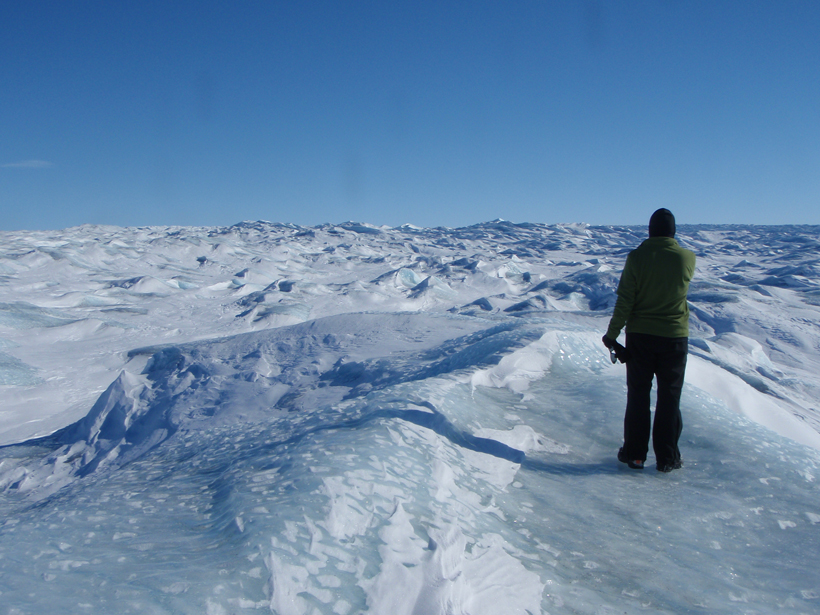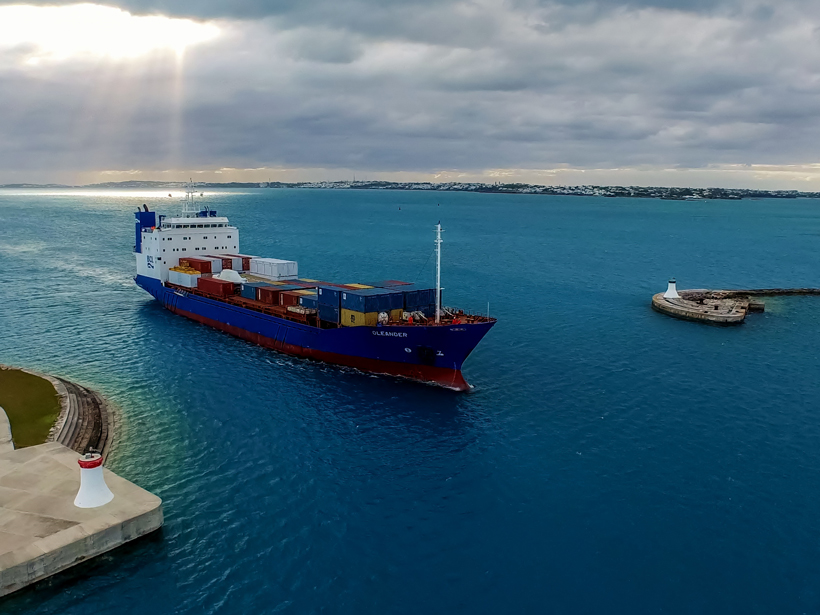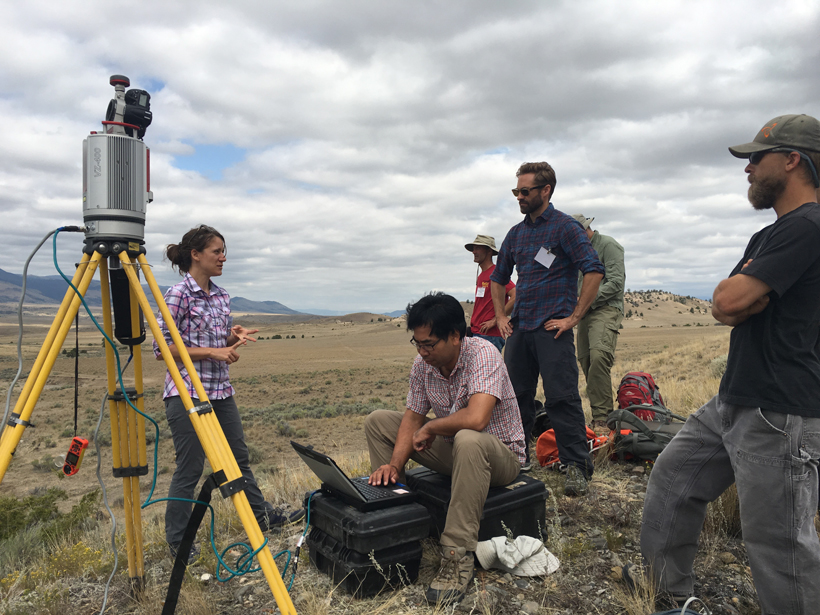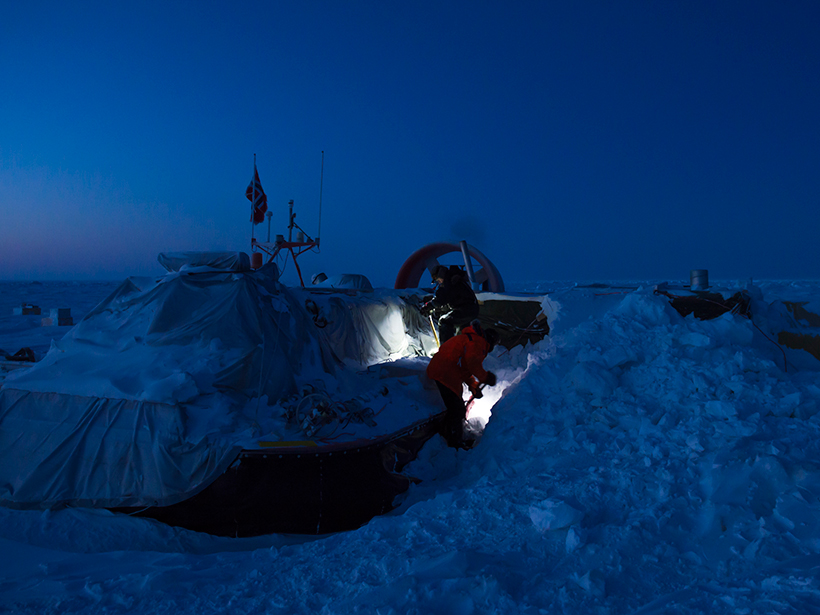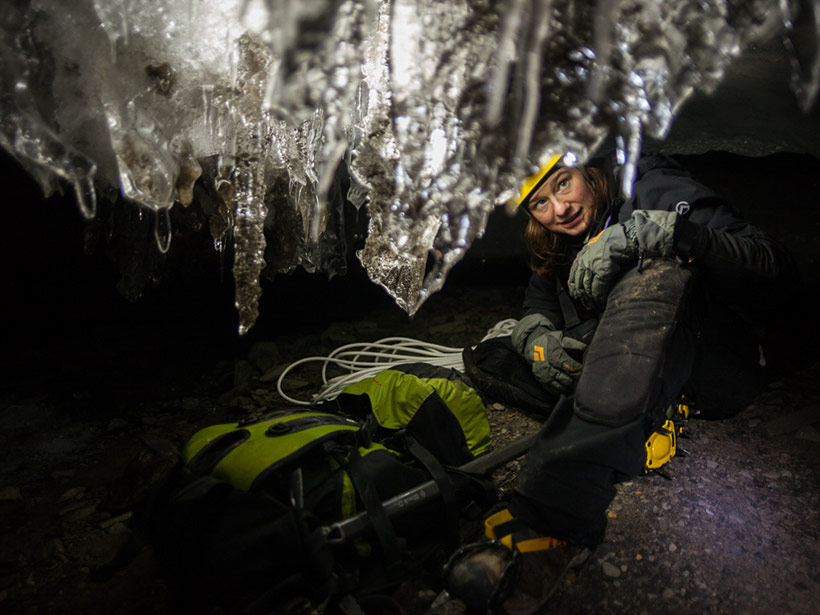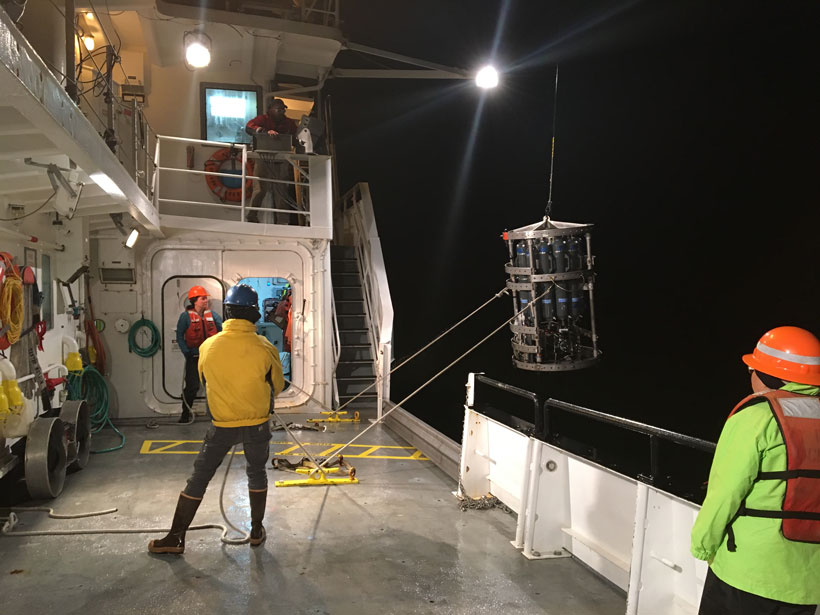For 2 weeks on the Greenland ice cap, scientists tested an instrument that might help us find life on icy moons with oceans beneath their crusts.
fieldwork
Packing Science into a Shipping Vessel
Oleander Workshop II: 25 Years of Operations; Narragansett, Rhode Island, 26–27 October 2016
Observing the Ocean
How measurements from a glider deployed off the coast of Peru are contributing to a much-needed long time-series data set.
Integrating Topographic Imaging into Geoscience Field Courses
Using TLS and Structure from Motion (SfM) Photogrammetry in Undergraduate Field Education; Cardwell, Montana, 16–19 August 2016
Boulders Limit Transport of Sand and Gravel in Steep Rivers
Mountain rivers and streams actively reshape landscapes by eroding material from uplands and depositing it in lowlands. Scientists can now predict this transport in very steep streams.
Scientists Spend Arctic Winter Adrift on Sea Ice
A hovercraft-based ice drift station gives researchers access to previously inaccessible regions of the changing Arctic sea ice cover off the coast of Greenland.
The 2015 Indonesian Fires: Less Carbon Release Than Was Thought
Preliminary results from field measurements of smoldering Kalimantan peatlands suggest that the fires emitted 8% less carbon dioxide and 55% less methane than were previously estimated from lab tests.
Visiting the Volcano
Workshops on Volcanoes; Santiaguito, Guatemala, 4–12 January 2016
Into the Belly of a Glacier
Ice caving started as a weekend hobby but has now blossomed into a portion of graduate student Kiya Riverman's Ph.D. research.
What Are Scientists Doing off the Oregon Coast in Winter?
Social media and the value of communicating field experiences to the public

